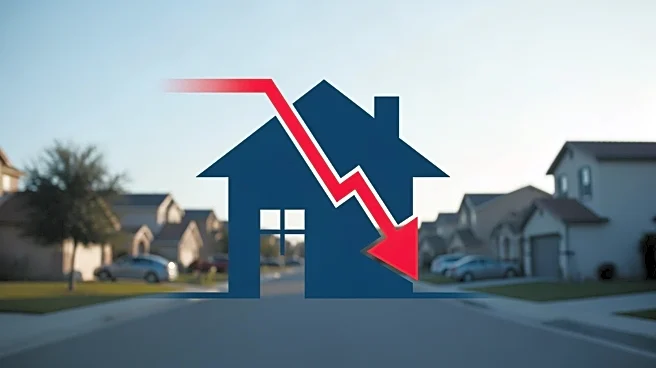What's Happening?
Lee & Associates has released its 2025 Q3 North America Market Report, revealing a complex landscape for the commercial real estate sector. The report indicates that economic and legal uncertainties, tariffs,
high costs, unemployment concerns, and the impact of artificial intelligence are contributing to mixed outcomes across various property types. Retail real estate is currently experiencing healthy demand, low vacancy rates, and rent growth, making it a preferred asset class. In contrast, the industrial and multifamily sectors are facing weakening demand. The office sector is seeing a return in tenant demand, although it remains unstable due to ongoing economic challenges.
Why It's Important?
The findings of the report are significant as they highlight the shifting dynamics within the commercial real estate market, which is a critical component of the U.S. economy. The retail sector's resilience suggests potential investment opportunities, while the challenges in the industrial and multifamily sectors could impact stakeholders reliant on these markets. The office sector's tentative recovery indicates a cautious optimism but also underscores the need for strategic planning amid economic uncertainties. These developments could influence investment decisions, urban planning, and policy-making in the real estate industry.
What's Next?
The report suggests that the commercial real estate market is in a state of anticipation, awaiting further clarity on tariffs and economic policies. The potential for increased vacancy rates in the industrial sector and the cooling demand in the multifamily sector may prompt stakeholders to reassess their strategies. The office sector's recovery will likely depend on broader economic trends and technological advancements. Stakeholders, including investors, developers, and policymakers, will need to monitor these trends closely to adapt to the evolving market conditions.
Beyond the Headlines
The report also touches on the broader implications of trade policies and technological advancements, such as AI, on the commercial real estate market. These factors could lead to long-term shifts in how properties are developed and utilized. The legal challenges surrounding trade agreements and the role of AI in shaping market dynamics present both risks and opportunities for the industry. Understanding these deeper implications will be crucial for stakeholders aiming to navigate the complexities of the current market environment.












